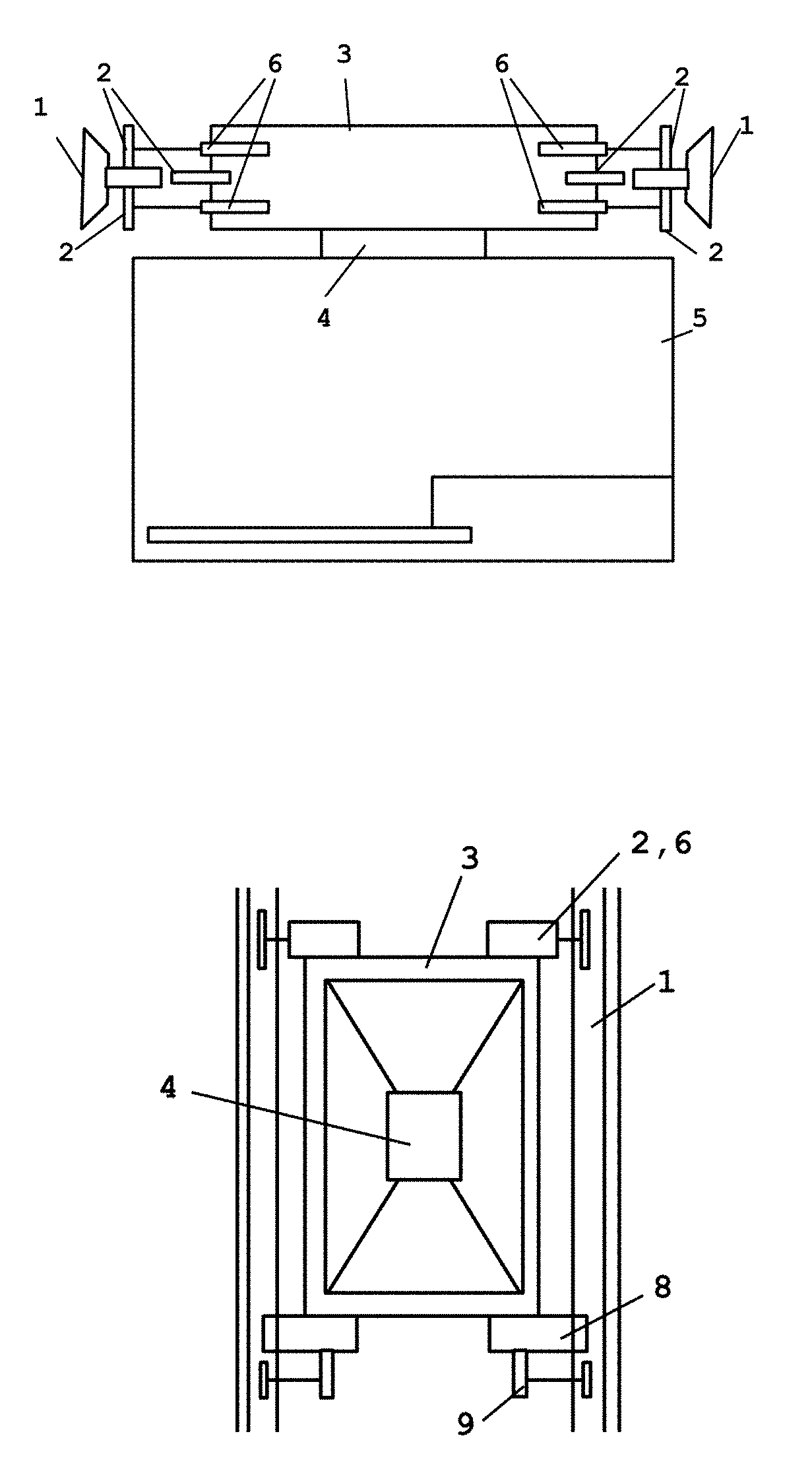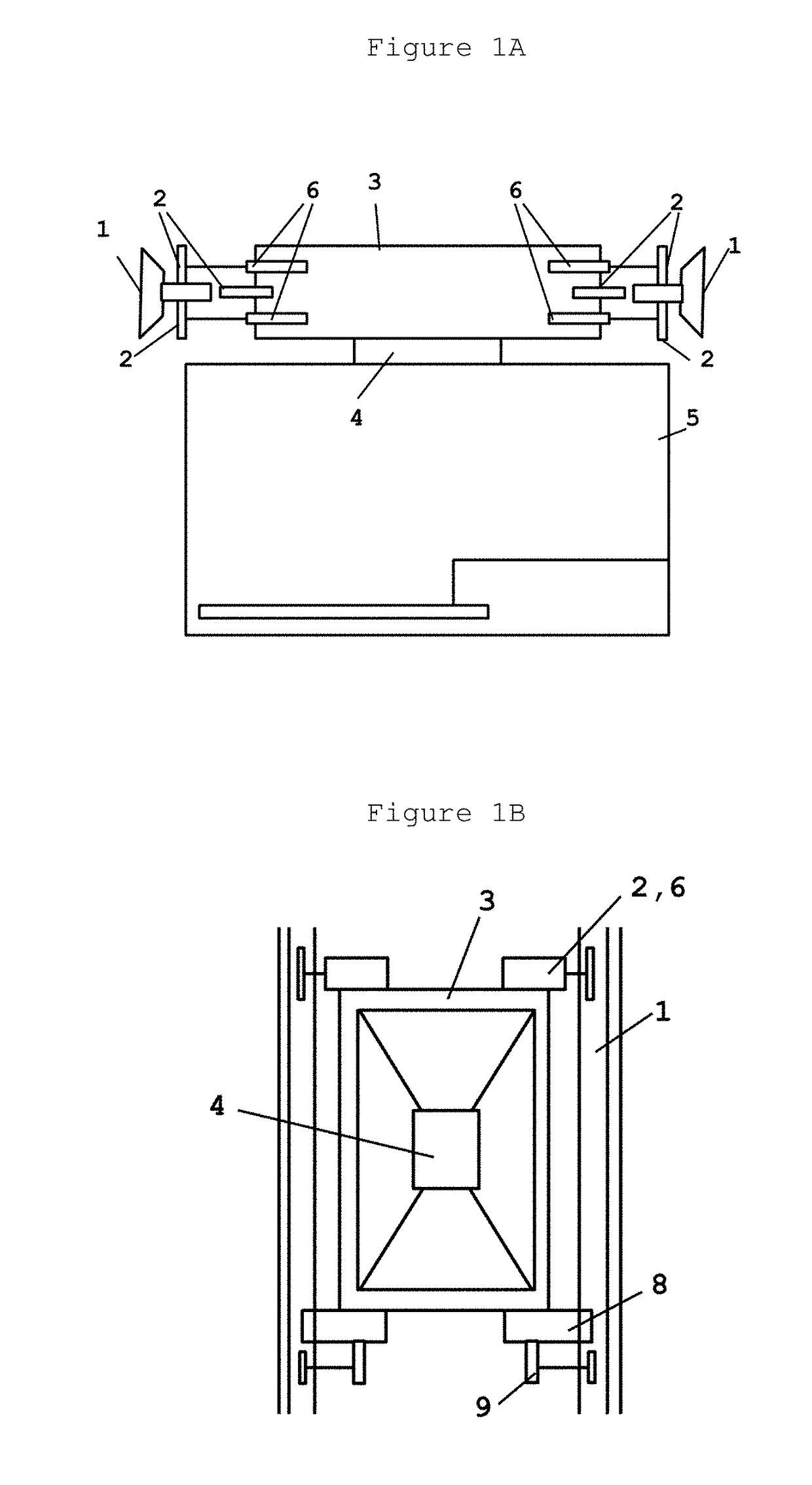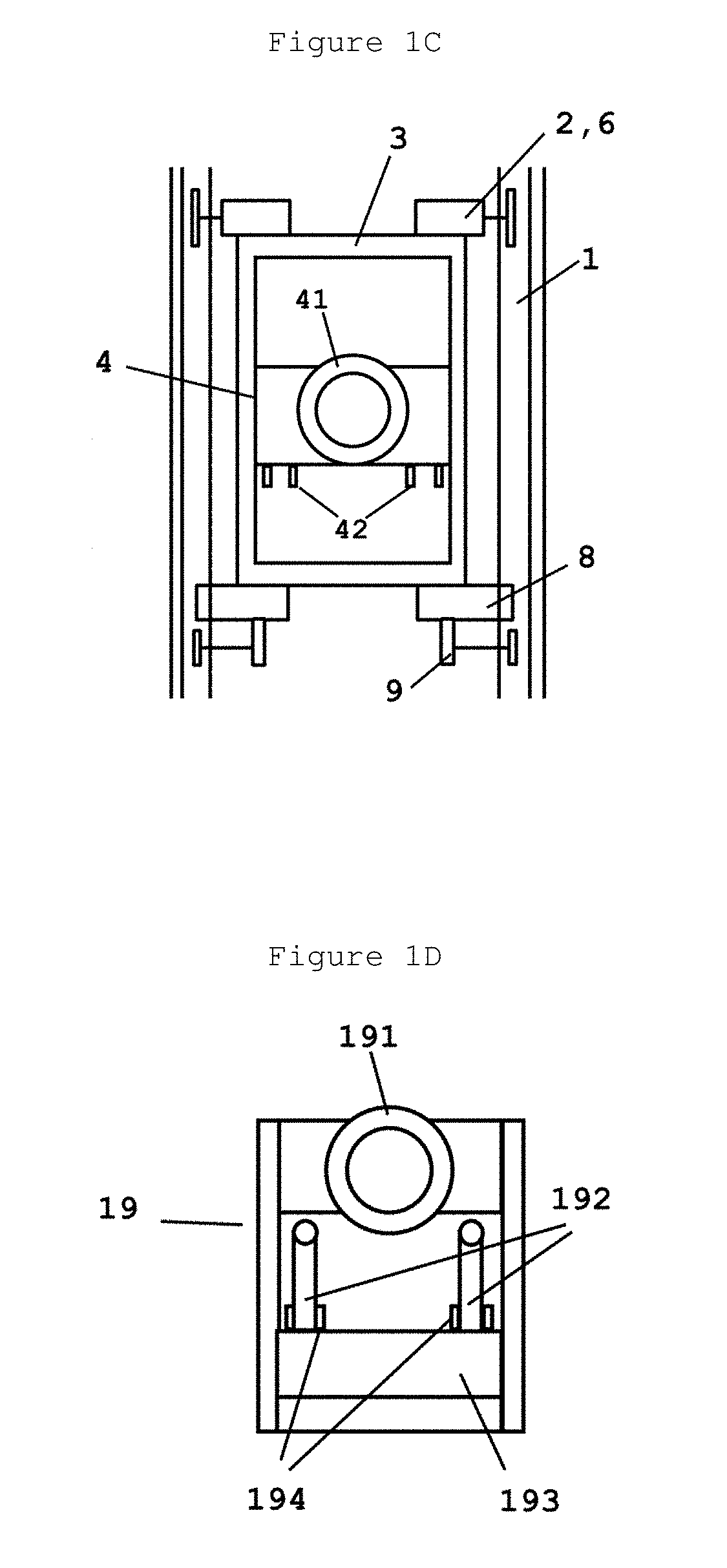Self-propelled elevators and elevator brake systems
a self-propelled, elevator technology, applied in the field of elevators, can solve the problems of not being able to travel along, maintenance of cables, tripping hazards, etc., and achieve the effect of accurately and safely operating an elevator cab, increasing the safety level of the elevator cab, and safe distance between multiple elevator cabs in the same elevator sha
- Summary
- Abstract
- Description
- Claims
- Application Information
AI Technical Summary
Benefits of technology
Problems solved by technology
Method used
Image
Examples
Embodiment Construction
[0041]To overcome the deficiencies of existing elevator systems, the present invention provides a self-propelled elevator system having at least one motor, a method for synchronizing and controlling said multiple motors, and an elevator brake system that can be used not only in said self-propelled elevator system, but also in other types of elevators to increase the level of safety.
[0042]The self-propelled elevator of this invention has smaller elevator shaft and overhead space requirements than traction or machine room-less elevators, produces less noise, and does not need any machine room, hoist and governor cables, sheaves, governor, overheads, counterweights or rope gripper. Furthermore, the elevator of the present invention requires less installation time, does not need a temporary platform during installation, and requires no outside hoist when constructing a new building.
[0043]Advantages of the self-propelled elevator of this invention include:[0044]1) Since the motors are di...
PUM
 Login to View More
Login to View More Abstract
Description
Claims
Application Information
 Login to View More
Login to View More - R&D
- Intellectual Property
- Life Sciences
- Materials
- Tech Scout
- Unparalleled Data Quality
- Higher Quality Content
- 60% Fewer Hallucinations
Browse by: Latest US Patents, China's latest patents, Technical Efficacy Thesaurus, Application Domain, Technology Topic, Popular Technical Reports.
© 2025 PatSnap. All rights reserved.Legal|Privacy policy|Modern Slavery Act Transparency Statement|Sitemap|About US| Contact US: help@patsnap.com



